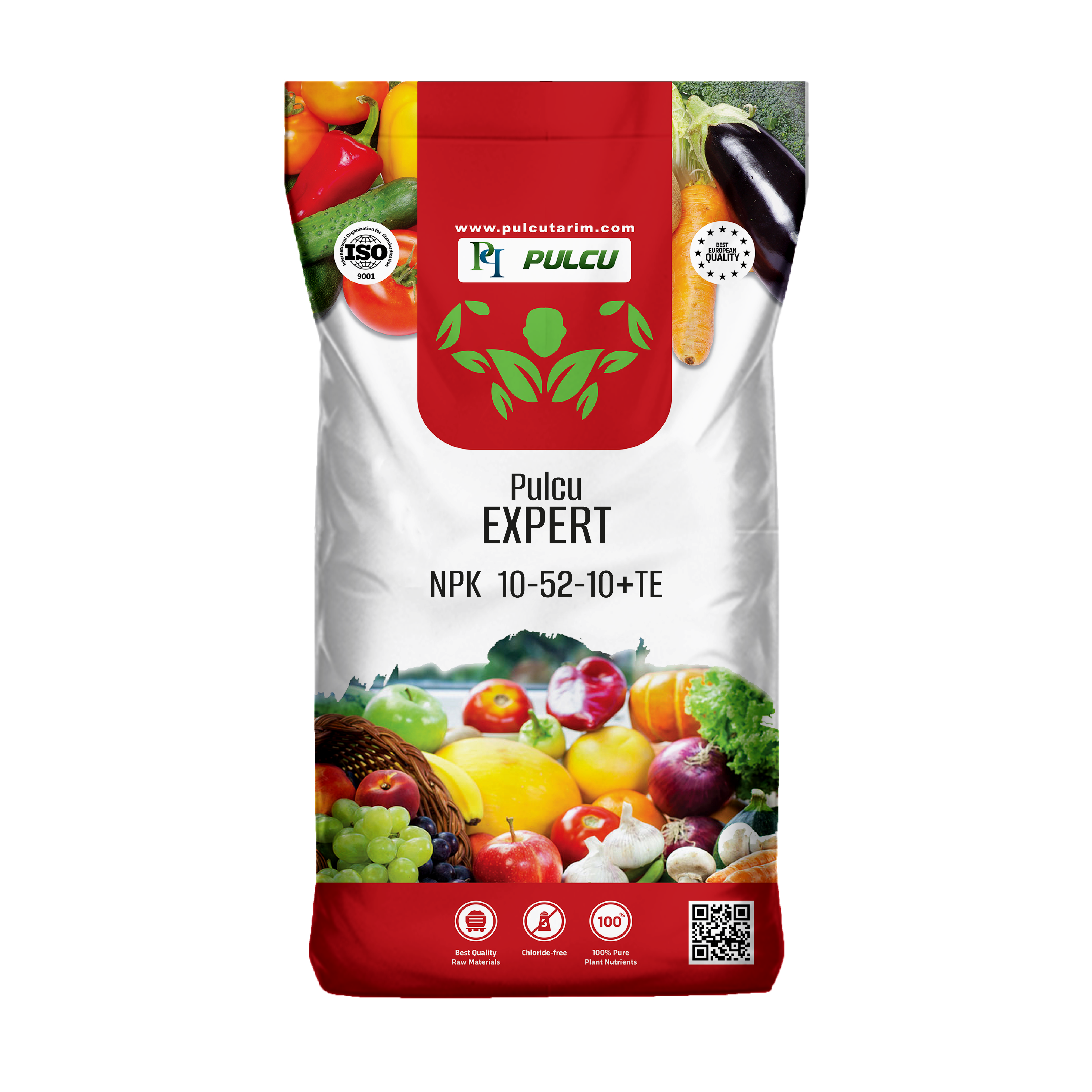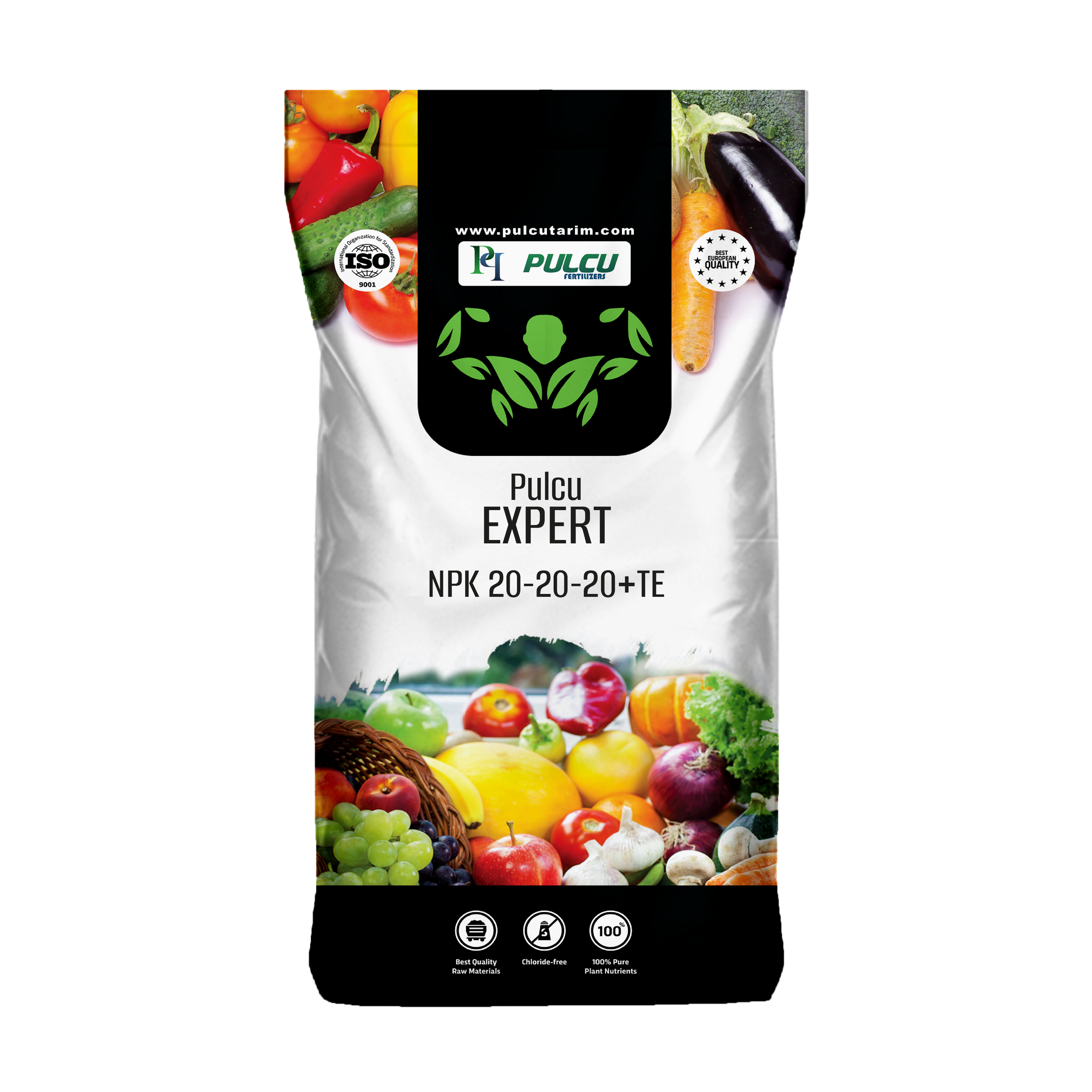Description
Content
Dosage
Description
Our Expert Water-Soluble Macronutrients product line containing essential micronutrients encompasses chlorine-free, chelated 100% water-soluble, crystalline solid mineral fertilizers which are made up of pure raw materials.
In sum, Expert NPK 10-30-10+TE:
- provides your plants with effective, fast, and balanced nutrition. One of its unique features is its ability to dissolve easily in water. This feature allows it to be used through all types of irrigation systems.
- with its higher amounts of phosphorus than its balanced nitrogen and potassium, it can be labeled as blossom or bloom booster. Phosphorus is essential for seed germination and for young plants to develop good root growth. This formulation is highly suggested for root vegetables such as swede, carrots, and turnips that need high phosphorous. In addition; it stimulates tillering, and hastens maturity.
- Nitrogen in its content stimulates green leafy growth and promotes fruit and seed development; Phosphorus supports the transfer of energy throughout the plant for root development and flowering; Potassium is essential for photosynthesis and regulates many metabolic processes required for growth, fruit, and seed development. This affects all aspects of plants well-being, from cold and drought tolerance to disease and pest resistance.
Content
Guaranteed Content (w/w)
| Total Nitrogen (N) | 10% |
| Water Soluble Phosphorus (P2O5) | 30% |
| Water Soluble Potassium (K2O) | 10% |
| Water Soluble Boron (B) | 0.02% |
| Water Soluble Copper (Cu) | 0.03% |
| Water Soluble Iron (Fe) | 0.06% |
| Water Soluble Manganese (Mn) | 0.03% |
| Water Soluble Molybdenum (Mo) | 0.002% |
| Water Soluble Zinc (Zn) | 0.02% |
| EDTA CHELATED |
Dosage
| Crop Types | Application Period |
Apple, Pear, Peach, Plum, Apricot, Cherry, Citrus fruits, Walnuts, Almonds, Pistachios | It is applied at the beginning of growth periods and when the plant needs nutritional support at a dosage of 100-200 gr/daa or 200 gr/100 L water. It can be tank-mixed with many insecticides and fungicides. 3 applications can be made during the season. |
| Olive | When flower bunches emerge, it is applied at a dose of 100-200 gr / 100 L water. This will be repeated after the emergence of the fruit. |
| Strawberry | When the first fruit bud appears, it is applied at a dosage of 200 gr / daa. It can be applied 3 or more times with 7-10 days intervals. |
| Vineyard, Raspberry, Blackberry | At the beginning of the growth period or when necessary, it is applied at a dosage of 200 gr / daa. |
Cotton, Soybean, Peanut, Sugar Beet, Sweet potato | After the completion of the leaf formation, it is applied at a dosage of 200 gr / daa and repeated if necessary with an interval of 15 days. |
| Corn, Sunflower | It is applied at a dose of 200 gr / daa together with weed killers. Repeat 1-2 times if necessary. |
| Tobacco | When it is necessary to give complementary nutrients to the soil washed by heavy rains during the field period, it is sprayed to the leaves at a dose of 200 gr / daa. Repeat until the desired leaf color and growth are achieved. |
Tomato, Eggplant, Pepper, Cucumber, Pumpkin, Melon, Watermelon | When the plant is 3-4 weeks old, it is applied at a dosage of 200 gr / daa. For best results, 5-7 applications should be accomplished with 7-10 days intervals during the season. |
| Potato | When the plant is young, the first application is made at a dosage of 200 gr / daa and it is applied at intervals of 7-10 days until 30 days after the formation of the tuber. |
| Wheat, Barley, Rye, Oats, Rice | At the beginning of tillering, it is applied at a dose of 200 gr / daa together with weed killers. The second application should be made when 10% of the grain ears appear. |









